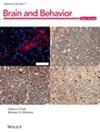A Preliminary Study of Effect of Melatonin on Inflammation and Hypoxia-Related Factors in a Mouse Model of Elastase-Induced Intracranial Aneurysm
Abstract
Introduction
Intracranial aneurysms (IAs) are relatively common cerebrovascular anomalies. Melatonin could modulate inflammatory and offers neuroprotective effects, and its role in IA has not been fully elucidated.
Methods
An elastase-induced IA mouse model was constructed and melatonin (150 mg/kg) was administered to investigate its therapeutic effects on IA. Aneurysm formation was observed by bromophenol blue gelatin perfusion, and the pathology changes in IA mice were examined using hematoxylin-eosin (HE) staining. The potential mechanisms of melatonin treatment of IA were explored using western blot, enzyme-linked immunosorbent, real-time qPCR, immunohistochemistry, and flow cytometry. An H2O2-reduced human brain vascular smooth muscle cells (HBVSMC) injury model was also constructed.
Results
The formation of aneurysms was observed in the circle of Willis in the IA mice. Melatonin treatment alleviated the thinning of blood vessel walls and disruption of the internal elastic lamina in IA mice. The levels of Bcl-2 were significantly increased and Bax and cleaved caspase-3 were decreased in IA mice with melatonin treatment, suggesting reduced apoptosis. Furthermore, melatonin reduced levels of interleukin (IL)-1β, IL-6, and tumor necrosis factor-alpha (TNF-α) in IA mice. The H2O2-reduced HBVSMCs model showed consistent results. Melatonin reduced levels of krüppel-like factor 6 (KLF6) in IA mice. Importantly, melatonin significantly reduced levels of regulatory T cells (Treg), hypoxia-inducible factor (HIF)-1α, nuclear factor interleukin 3-regulated (NFIL3), TCDD-inducible poly-ADP-ribose polymerase (TIPARP), and increased levels of monocytes in IA mice.
Conclusion
Melatonin mitigates IA injury by modulating immune cells and hypoxia-related factors. These findings provide an exploratory foundation for therapeutic strategies in IA.


 求助内容:
求助内容: 应助结果提醒方式:
应助结果提醒方式:


